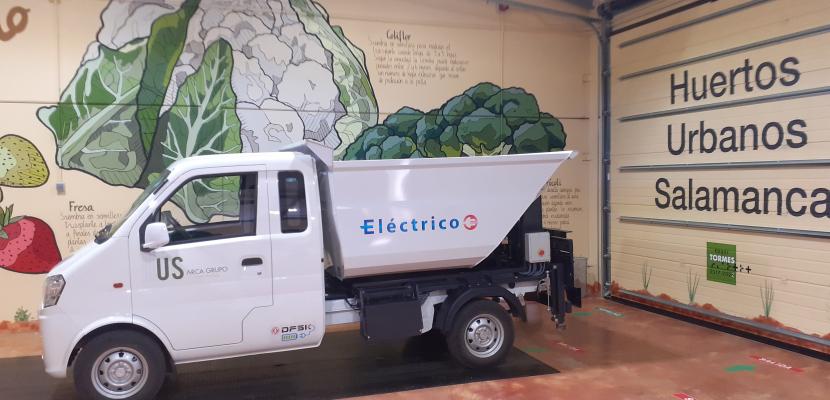
Salamanca Allotments

About this good practice
The aim of the initiative was to recover a degraded and illegally inhabited area near the river Tormes in Salamanca, and to create a large green area that mitigates climate change effects and provides citizens with open green spaces for leisure and urban agriculture practices with social, learning and research perspectives.
In order to reach these objectives, Salamanca Town Hall launched the transformation of a degraded area near Salas Bajas, between Chamberí and Tejares neighborhoods, to turn it into a large green area of more than 100.000 m2.
The site now accommodates 617 public urban allotment gardens and a walking and recreation area of 2.250 m that was built with natural and recycled materials. The revitalized green space also provides a large children's play area and many picnic locations. There are, in total, 9.200 m2 of green areas. The area also has smart appliances such as 25 photovoltaic panels to self-sustain the energy production and an irrigation tele management system with a rain sensor to promote water saving.
The 617 urban allotment gardens are divided into 11 sectors: 9 for citizens, 1 for associations and 1 for teaching purposes. Each allotment has a size between 40 and 45 m2. All gardens are ecological and for subsistence farming and also have a drip irrigation system.
The main stakeholders and beneficiaries of the allotments and the green area are, in general, all citizens and, in particular, physically or intellectually disabled people.
Resources needed
The total investment was 2.247.900 EUR, from the Regional Development European Fund (30%) and from the municipal budget (70%), within the frame of EDUSI (Integrated Sustainable Urban Development Strategy) Tormes+ for Salamanca city.
The team has 15 people with an additional support team.
Evidence of success
As of June 2022, based on the great acceptance and interest by citizens that resulted in more than 100 people in the waiting list for the allotments, an extension of the 696 existing allotment gardens is expected in two new sectors: sector F, with 1.400 m2 and 14 allotments, and sector M, with 6.300 m2 and 65 allotments, respectively.
All constitute one of the largest green lungs in the city, in line with the municipal policy for a new city model forced by the COVID-19 crisis.
Potential for learning or transfer
Salamanca urban allotment gardens can be inspirational to other regions for multiple reasons. Firstly, because of the problem that it addresses: many cities in the regions have degraded areas that are source of social and environmental challenges. Secondly, the way the municipal authorities face the problem is quite innovative by integrating in one solutions the response to many challenges such as climate change and COVID-19 crises. The recreated large green area provides open and healthy spaces for citizens and reduces heat islands in the city. It is also a solution that encourages social integration. The public acceptance and admiration by citizens that this initiative demonstrate is another good indicator of success and so, of potential for transferring.
Finally, the way the initiative has been financed via the EDUSI- Integrated and Sustainable Urban Development Strategy can encourage other city halls to elaborate wide strategies to face challenges from a new perspective.
Further information
Documents
Huertos Salamanca.jpg
Website
Good practice owner
You can contact the good practice owner below for more detailed information.
